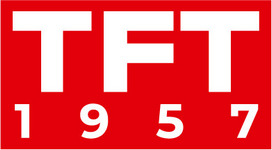- NewTek: the NDI native Flex control panel
- Panasonic: the new Kairos production platform
- AEQ: the Phoenix Venus 4 IP audiocodec
More details about this event in 360 seconds. Broadcast News & Commentary
Maria: The NewTek Flex panel allows direct control of PTZ devices, audio connections, audio and video mixing, and talkback, all connected with NDI. With these controls built directly into the panel, it significantly reduces the margin of error. So, Philip, tell me about this new panel.
Philip: Well, it’s interesting to see NewTek simplifying the process of producing shows. Obviously, there’s this never-ending need for people to consume content. This type of system really simplifies it so that, you no longer need a control room of 5 to 30 people, you can now do a lot of these things with a person or two. More importantly, with NDI, they can be dispersed across geographic regions, so you can have control of cameras that are halfway across the United States right there in the studio and still be able to produce a professional-looking show that is acceptable to the masses based on the technology. It’s exciting to see NDIs come a long way though it still competes against Uncompressed SMPTE 2110 in how it gets utilized, I see the adoption increasing across the collegiate community.
Maria: And Mary, from the audio aspect, what’s new in this?
Mary: There’s not much new for the audio side of it, it certainly is geared more toward video.
Maria: Moving on to Panasonic, Panasonic Connect North America has announced the next generation of KAIROS, the addition of two new core mainframes: the KC200 and KC2000, and software enhancement which will increase the platform’s scalability to support larger and more complex productions. Philip, what do you think this means for professionals?
Philip: From my understanding, what’s interesting is that the team that developed KAIROS is the same team that originally developed EVS’s panel, a software-based, GPU-based panel, and has ultimate scalability. It’s exciting to see where they’ll go with these. The big issue with any panel is the tactile surface they use and the adoptability. Theoretically, yes, they should be adoptable because there aren’t a lot of differences. I am excited to see us move more towards software-based solutions for production mixing because it makes for more flexible capabilities as we go into this REMI world.
Maria: Moving on to the main event if you will, the new AEQ Phoenix Venus 4 IP Audio Codec for point-to-point links stands out, having IP connectivity and 2 simultaneous bidirectional stereo transmissions with different formats and qualities. Mary, I know you were very keen to talk about this.
Mary: There are a lot of things about this that I think is very clever. Firstly, they’ve added OPUS, which is the codec that everyone’s been asking for because the quality is good and there is low latency but more importantly, they added three network adapters. This allows you to be able to connect via a network to a console. Having those three network ports gives so much flexibility. It also supports SIP, which is fantastic and another option is Dante. It gives you flexibility irrespective of the environment you find yourself. I also love the amount of the “belts and suspenders” approach they have with a different format and power supplies. So well done AEQ!
Philip: I have a question Mary, in the video world, when we get new codecs, there would be a spade of them, and in time, it sorts of dies off and you see a winner. In the audio world, how are new codecs adopted or seen? Are they turning a titanic to get people to adopt them or from a technology perspective, do you see the users on the audio side craving for these new codecs?
Mary: That’s a great question. I’m a huge fan of OPUS, as are many people but it took OPUS 15 years to get people to really adopt it and start to use it. And we still have people today who want to use MP3 or MP2 and those were developed so long ago. The biggest complaint against those algorithms –as good as they were in their time- is their latency, so that’s where I wish we would see more focus on audio quality overall. But at least we have OPUS which has very good quality and low latency which is like the magic formula.
Maria: That’s all we have for today. Many thanks to our experts Mary Seidler and Philip Grossman. Don’t forget to comment on the news we have discussed here or on any of our social media platforms. See you again same time next week.
Hosts Philip Grossman, Mary Ann Seidler, Maria Kholodova.
The program can be viewed every Monday at 19:00 in the UTC+4 time zone by clicking on any of these links:









